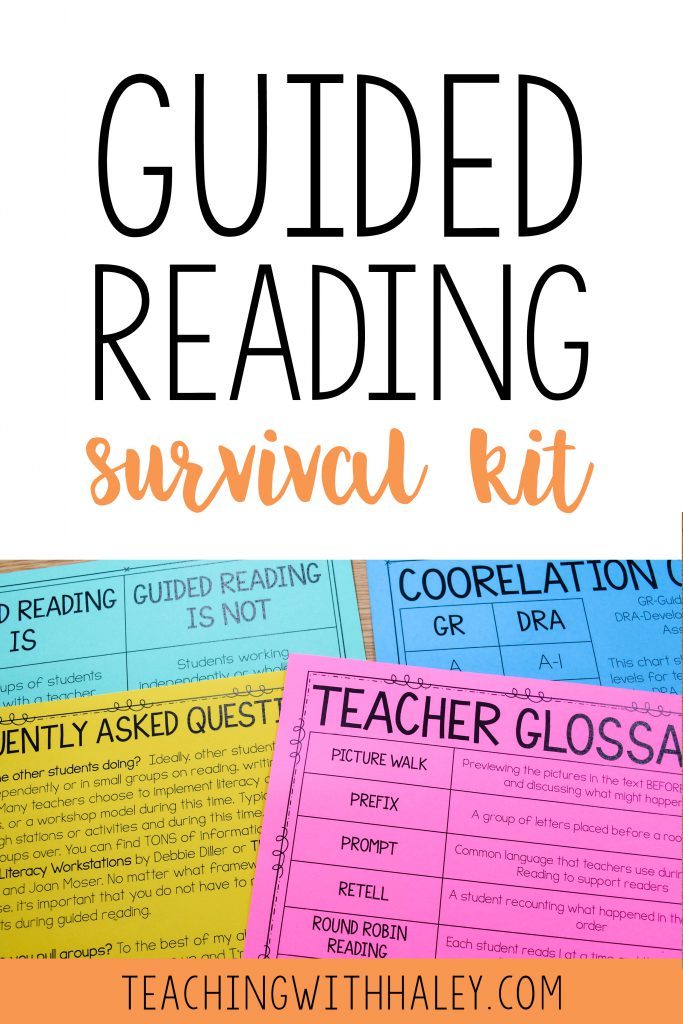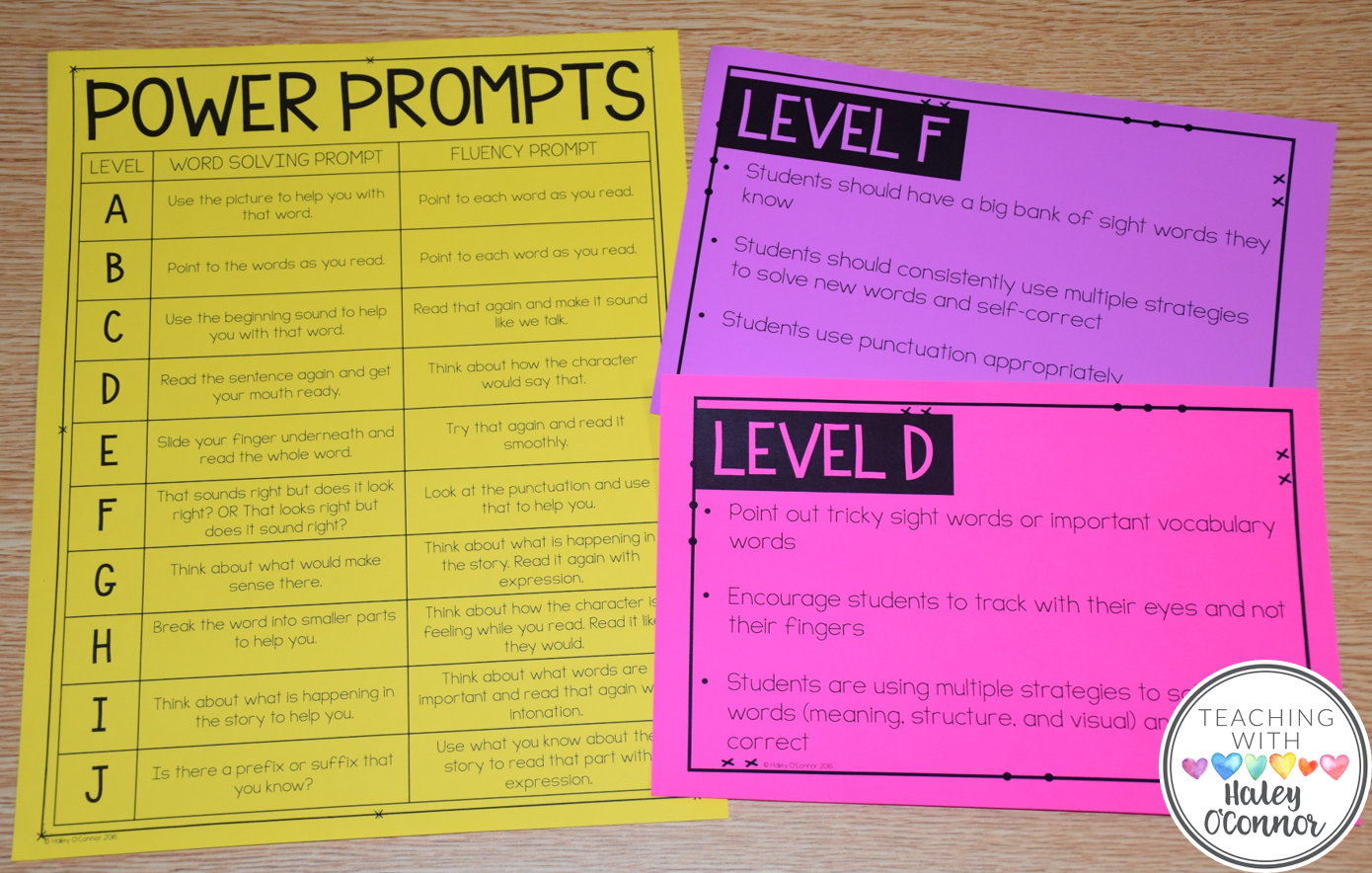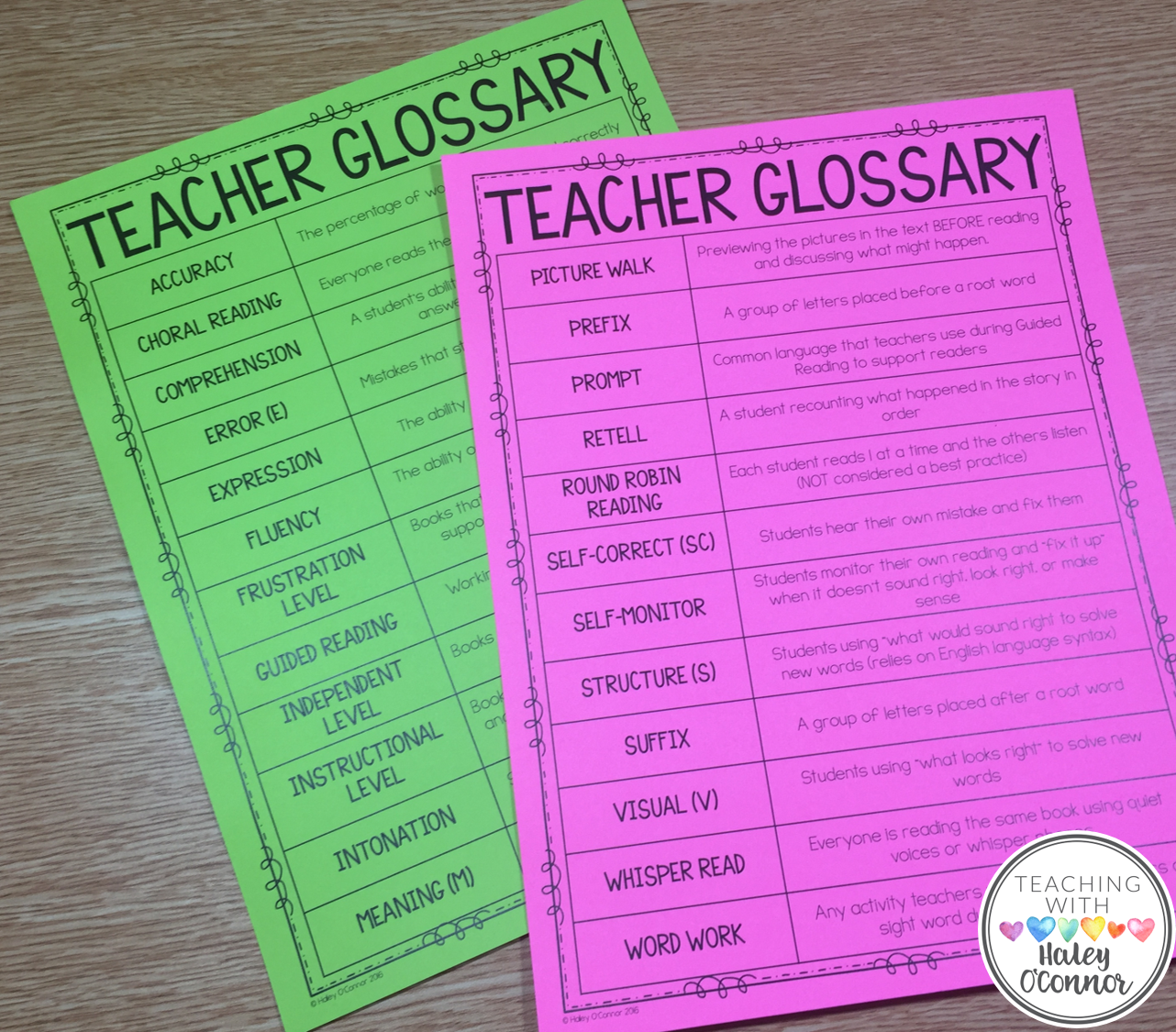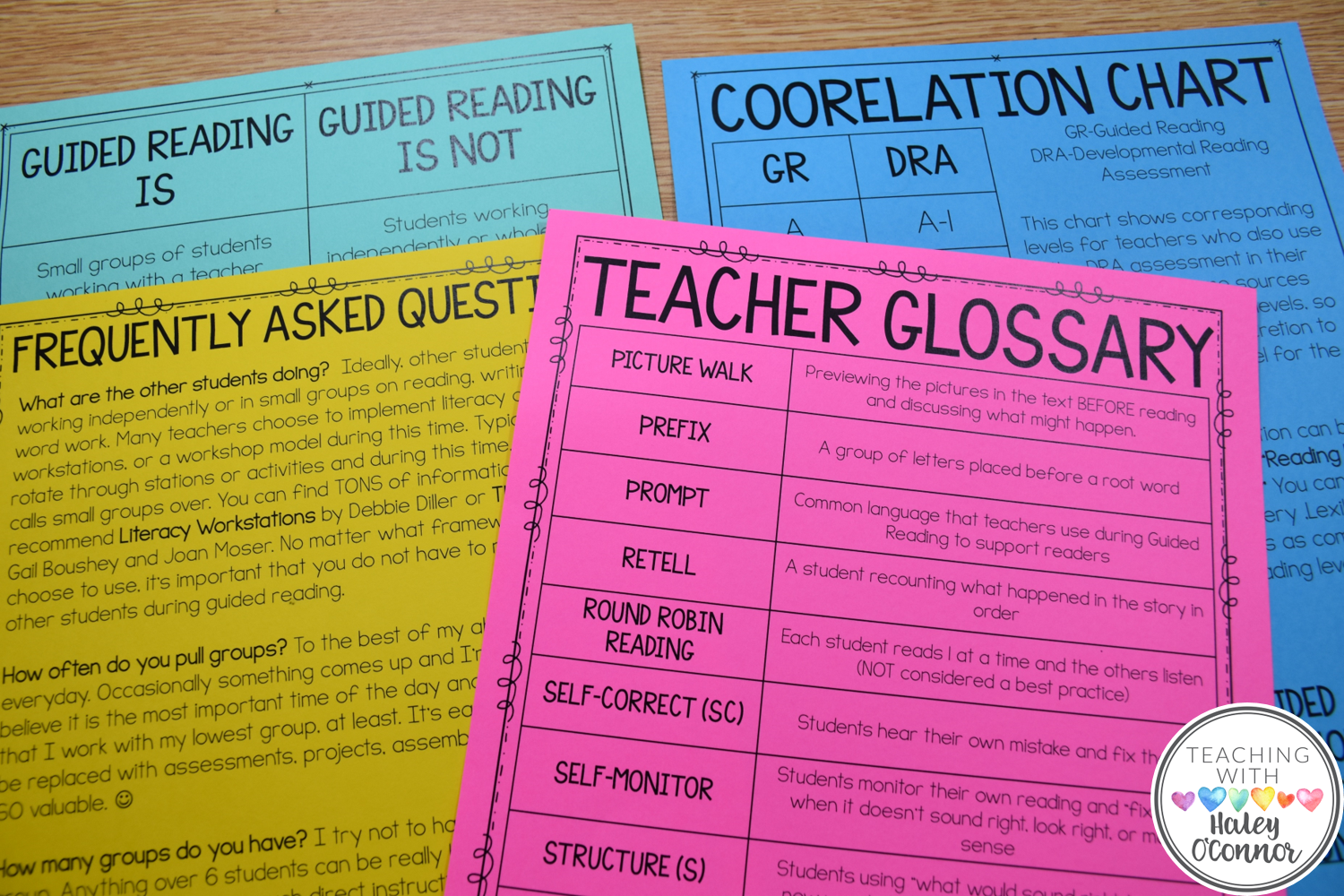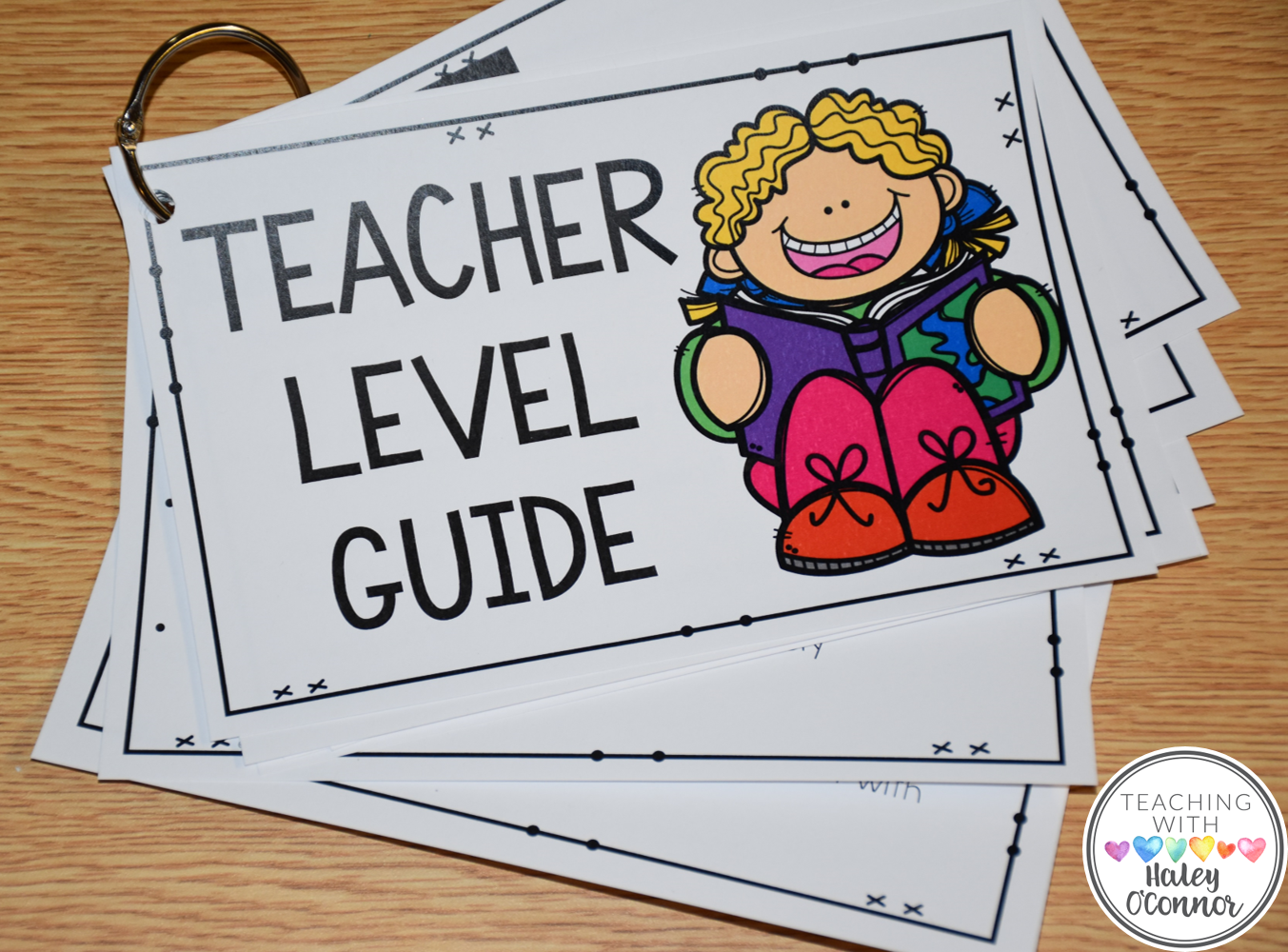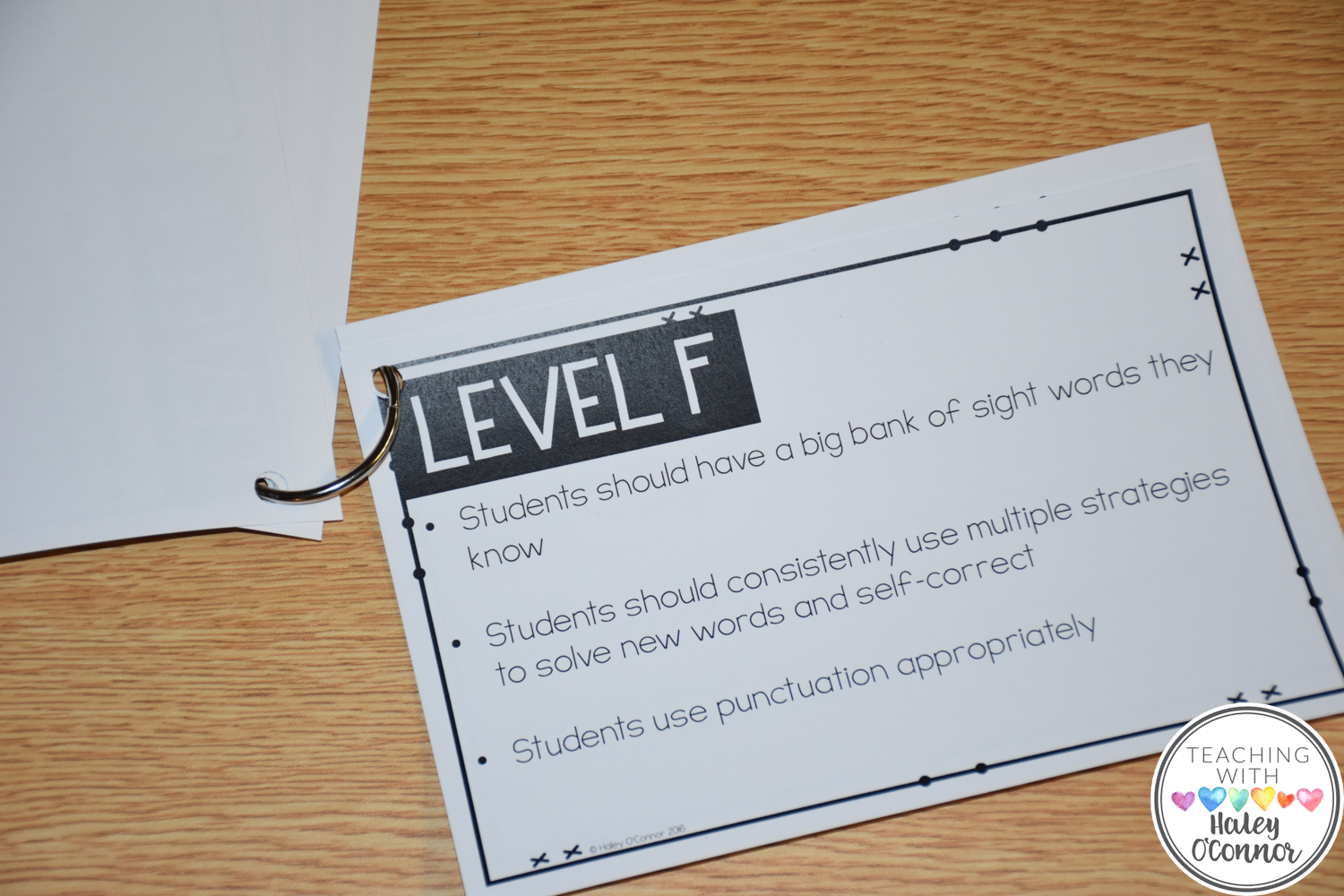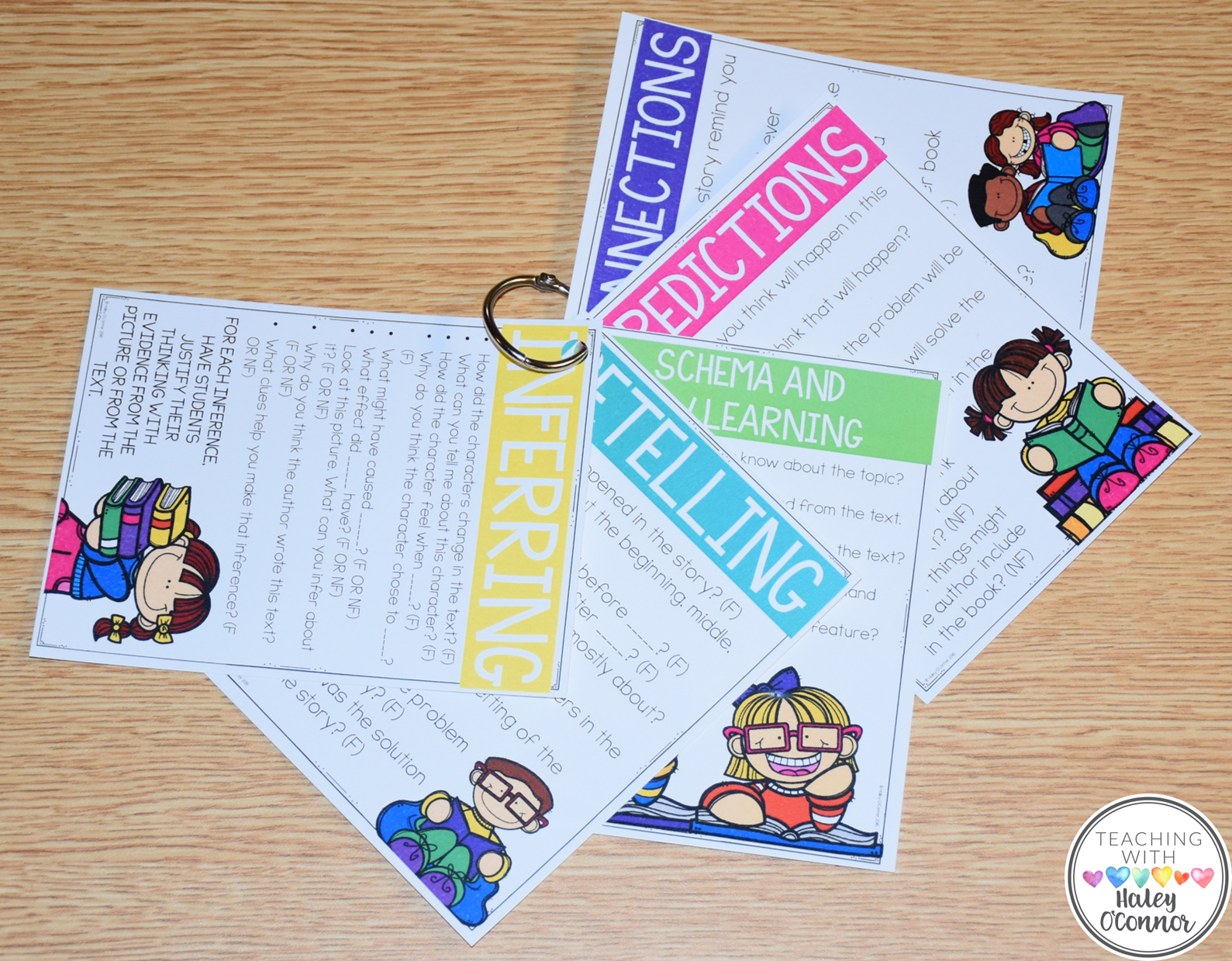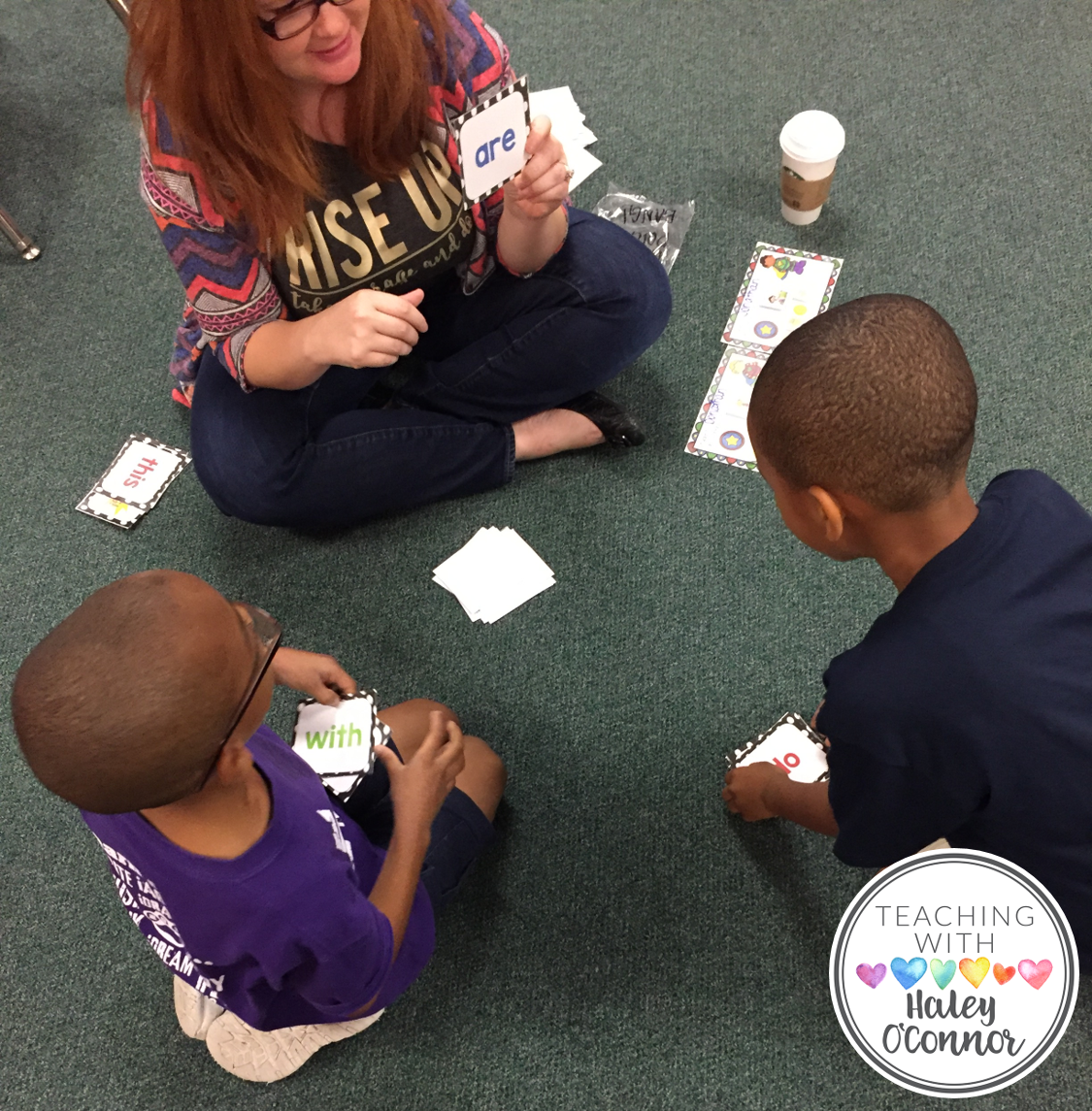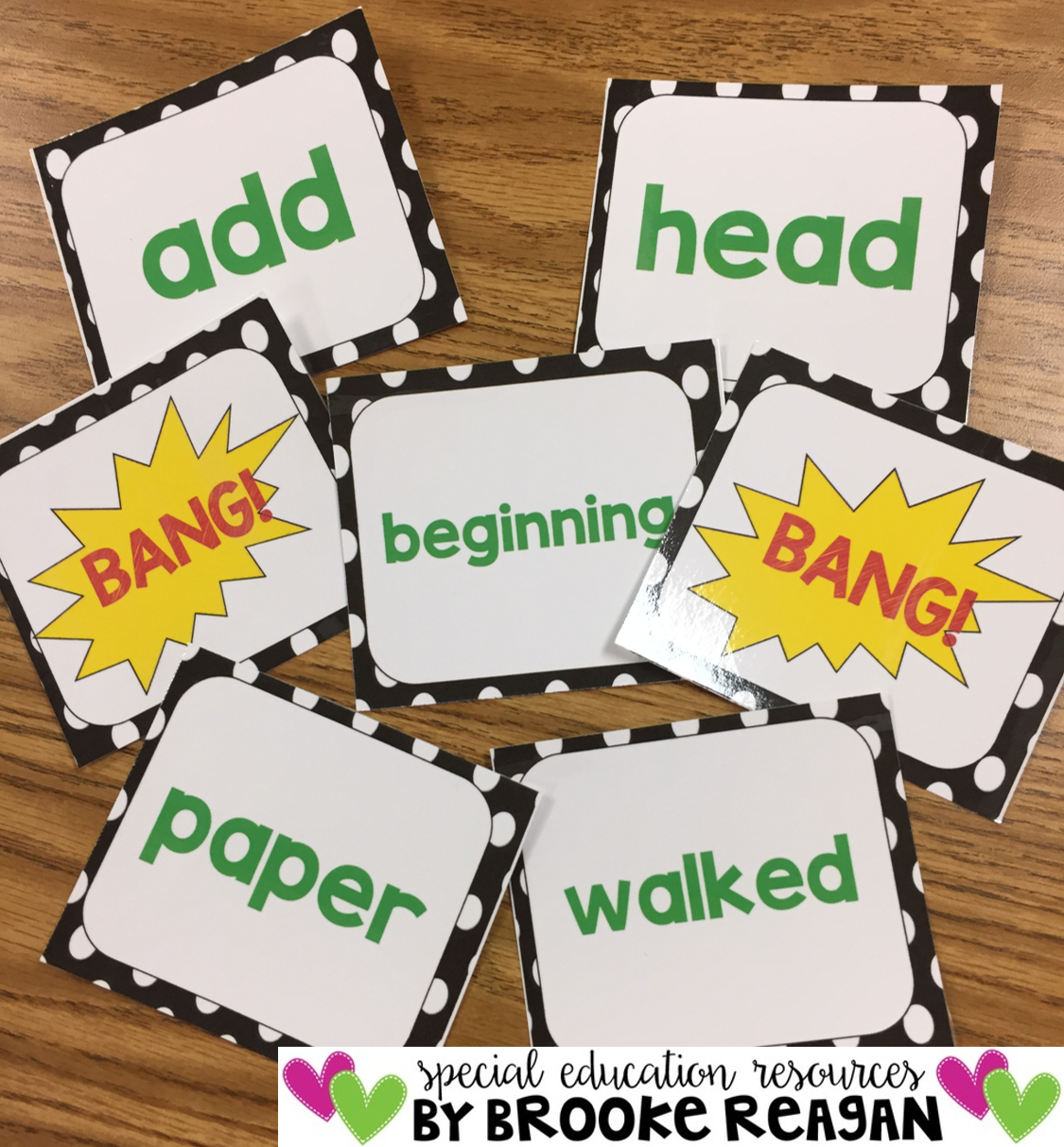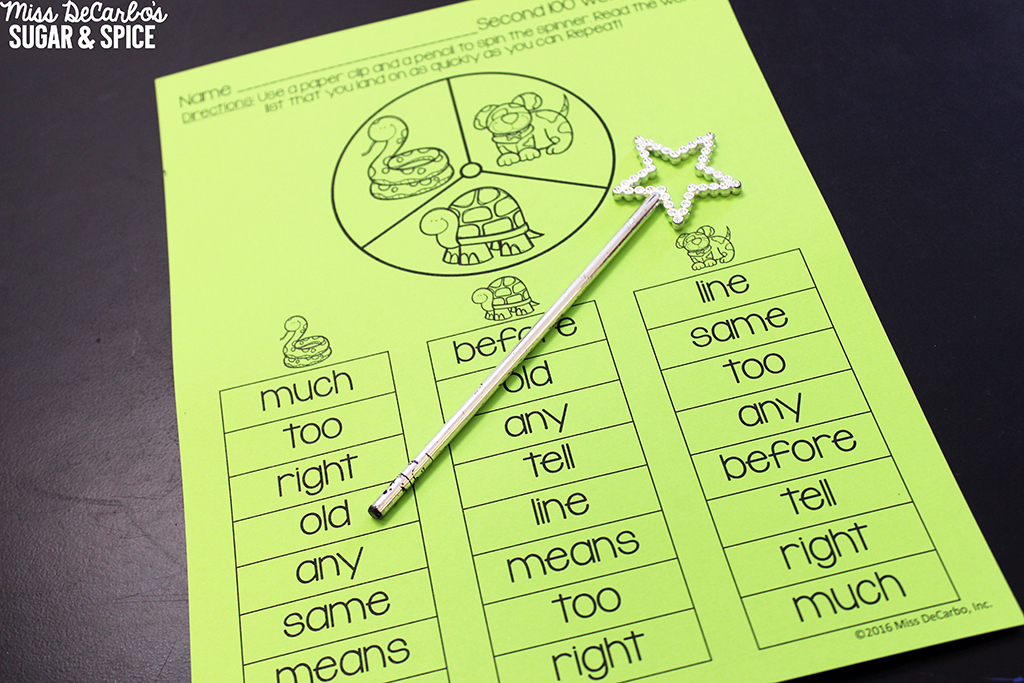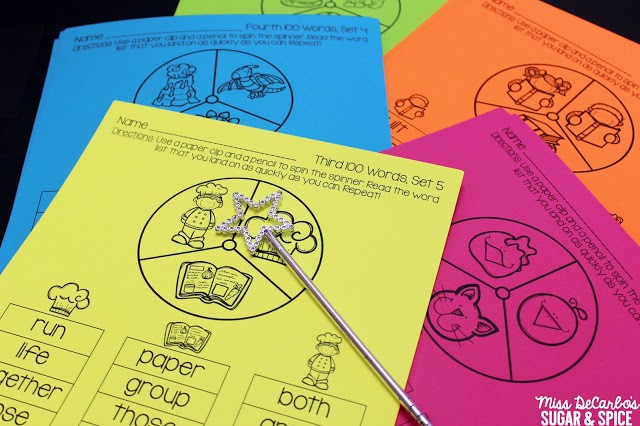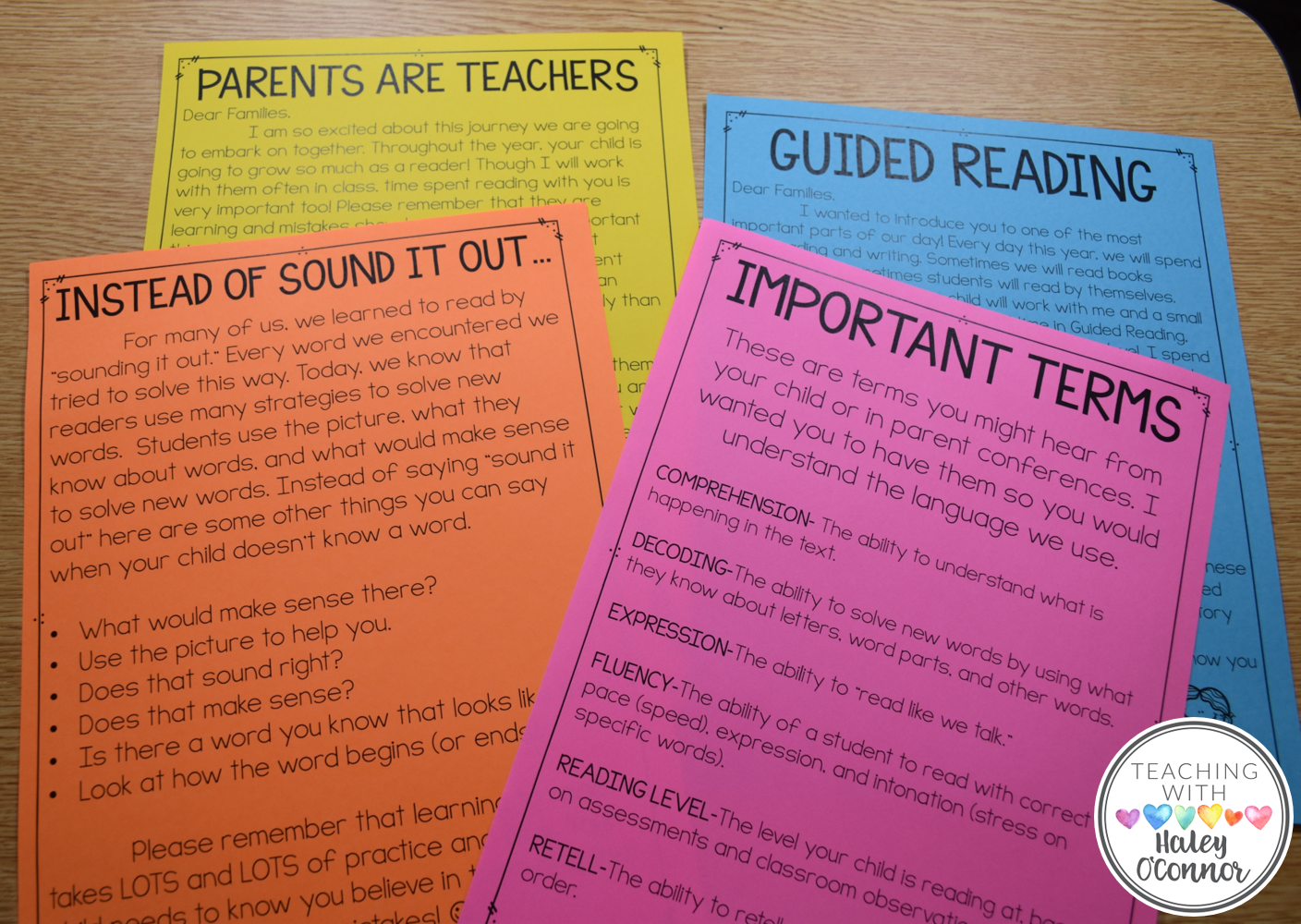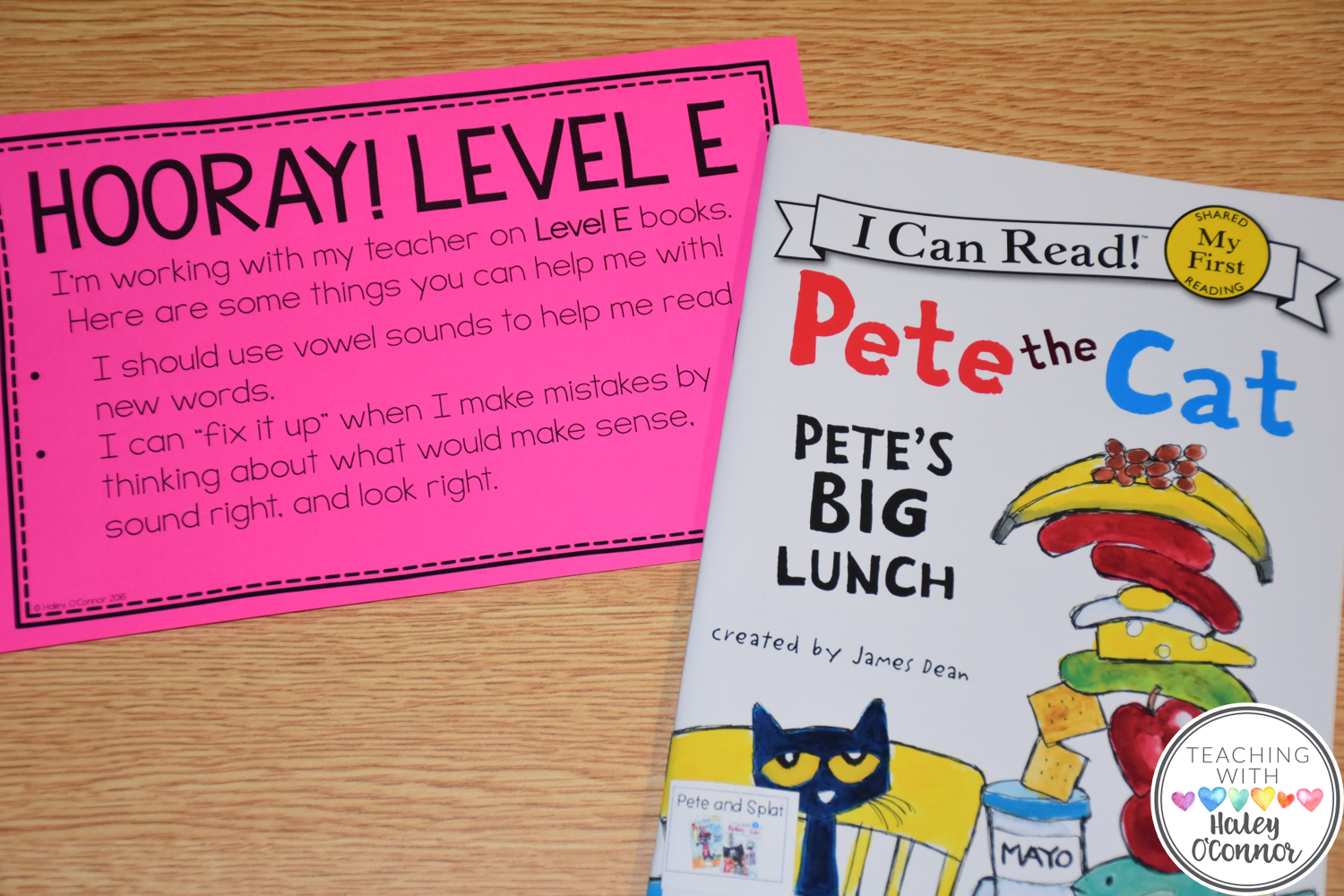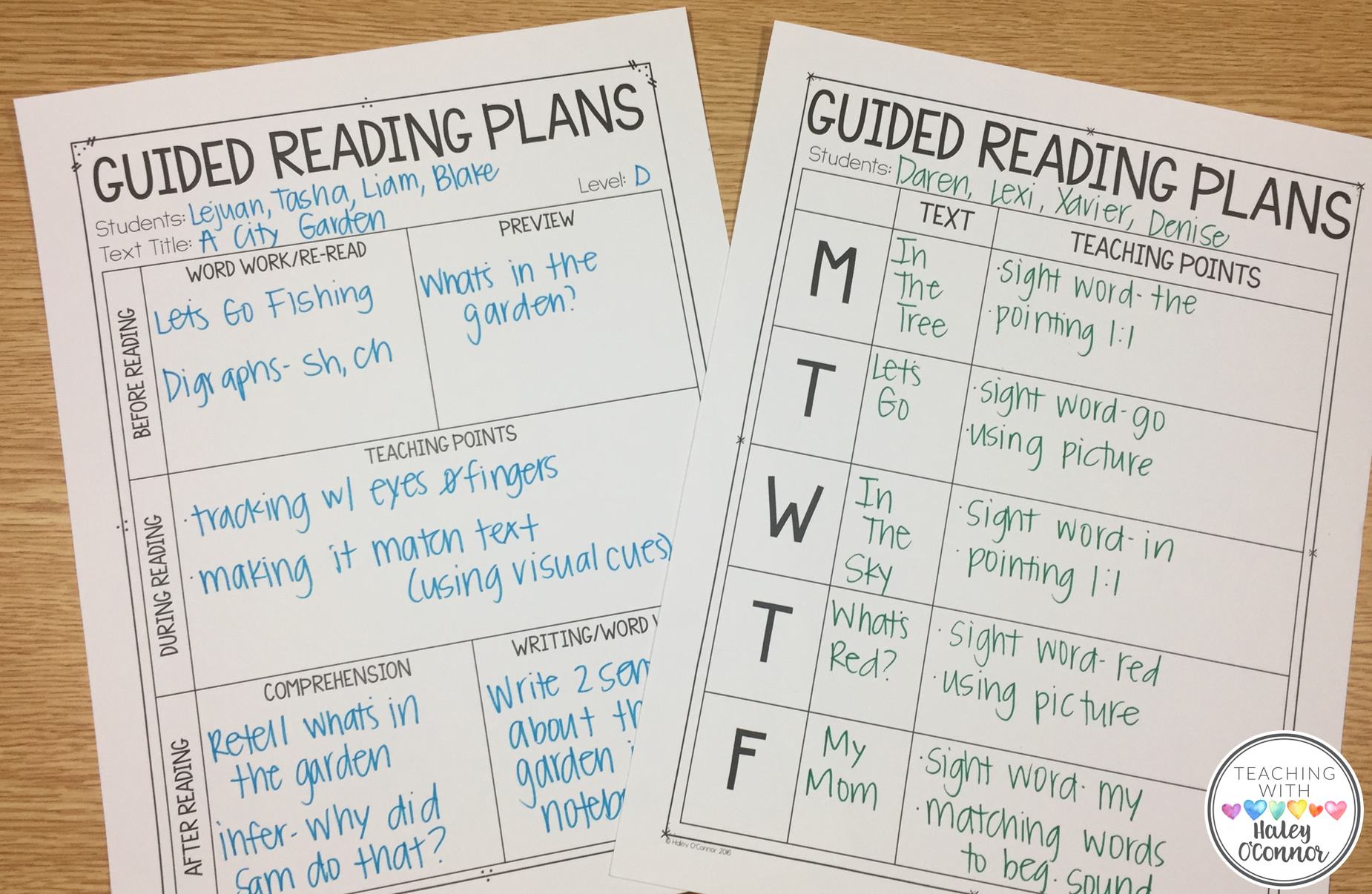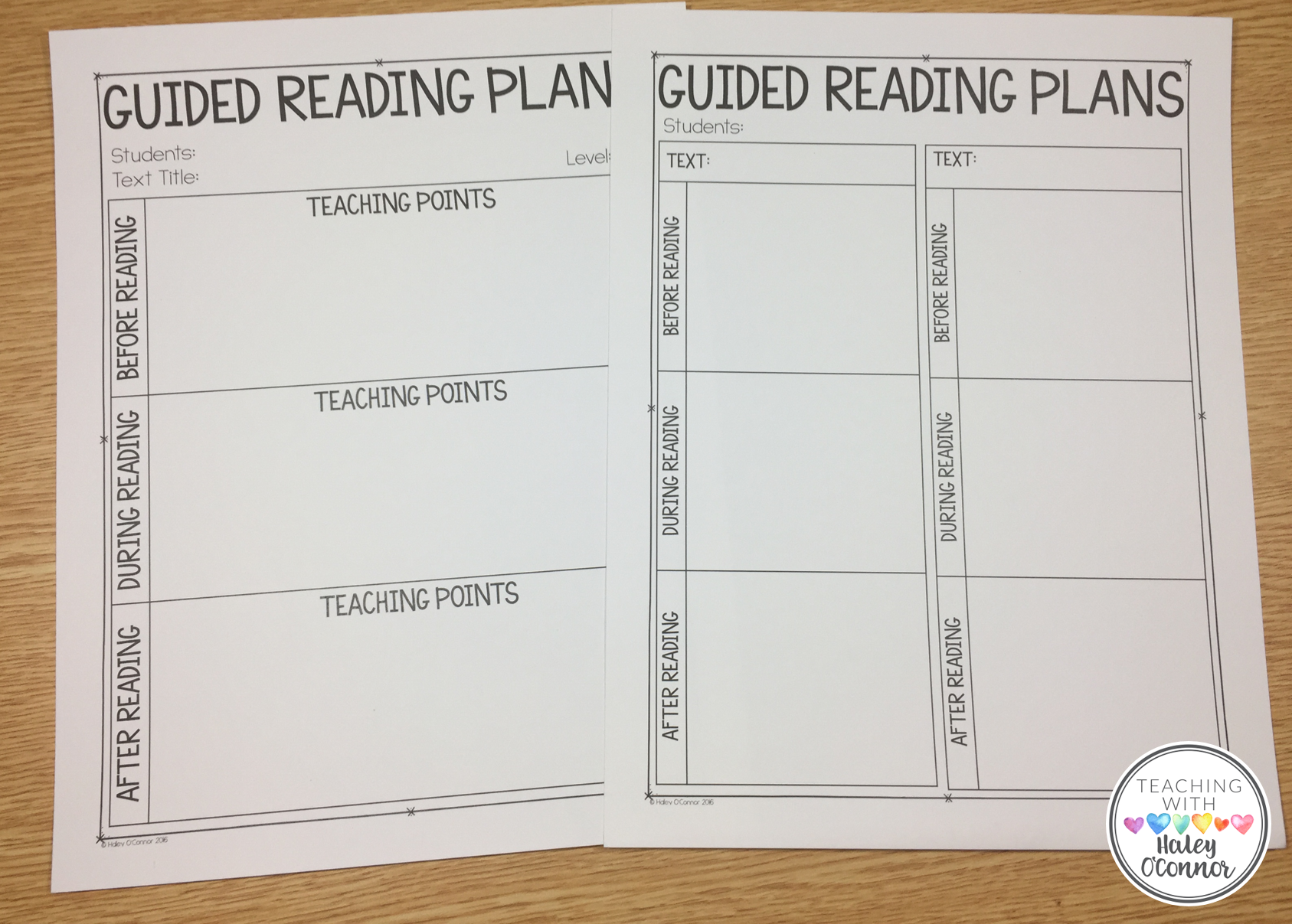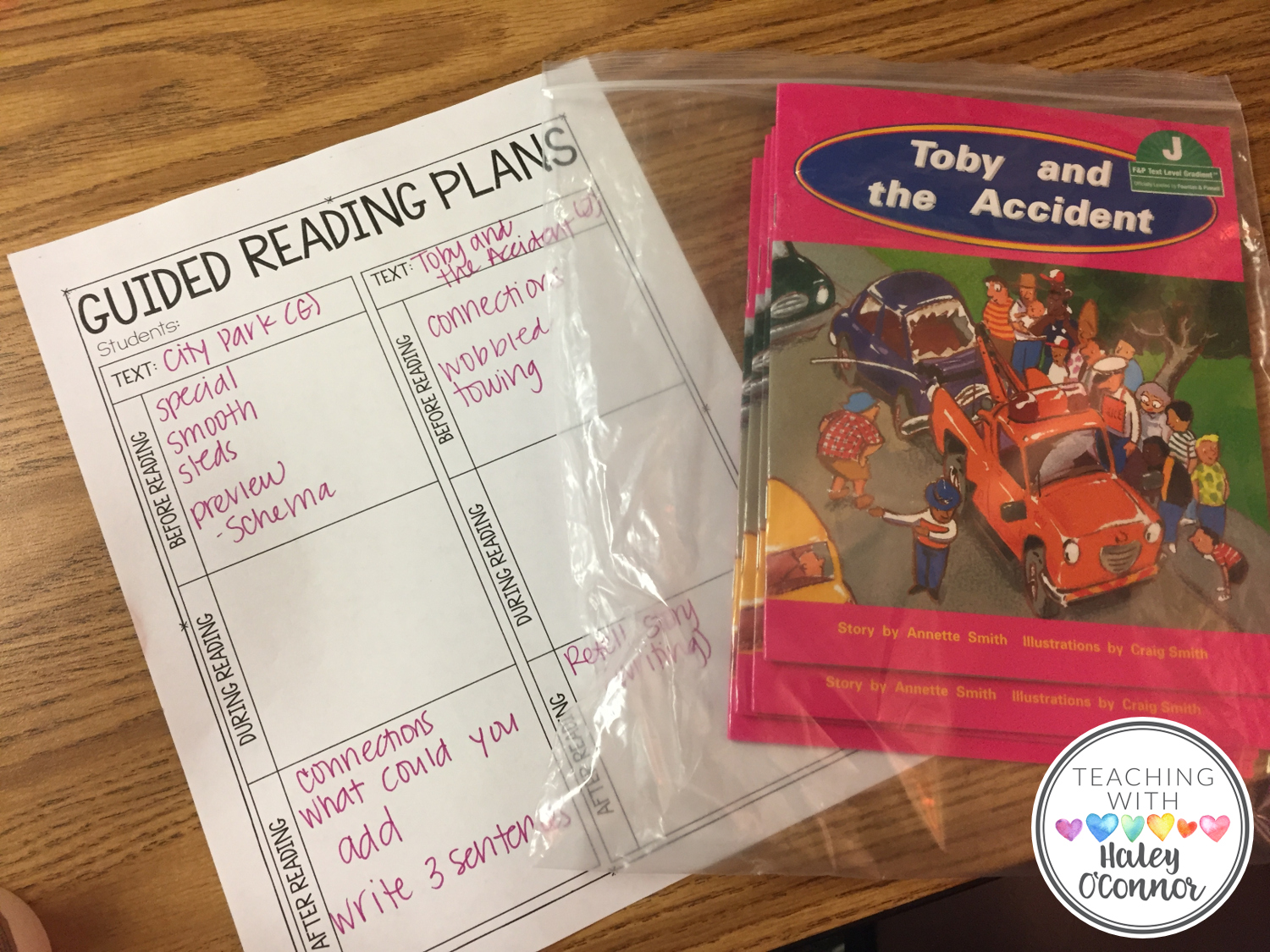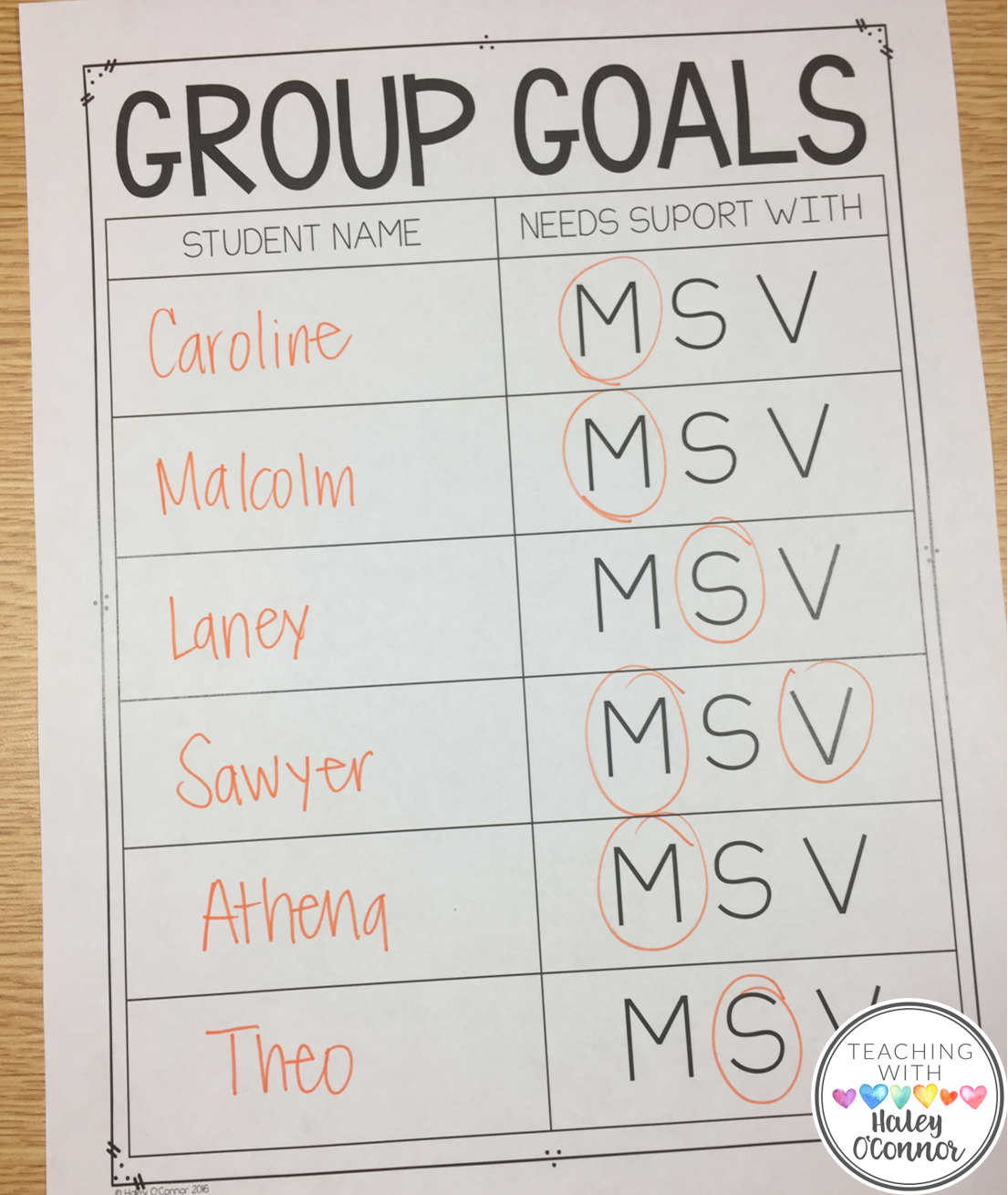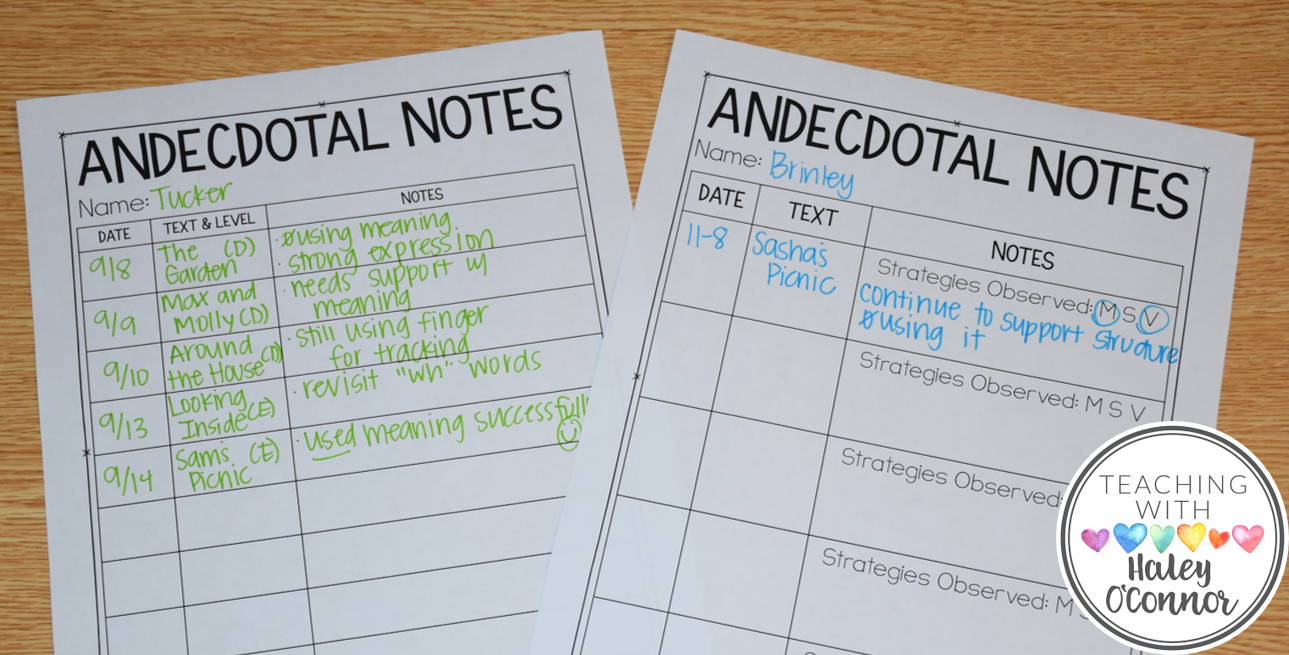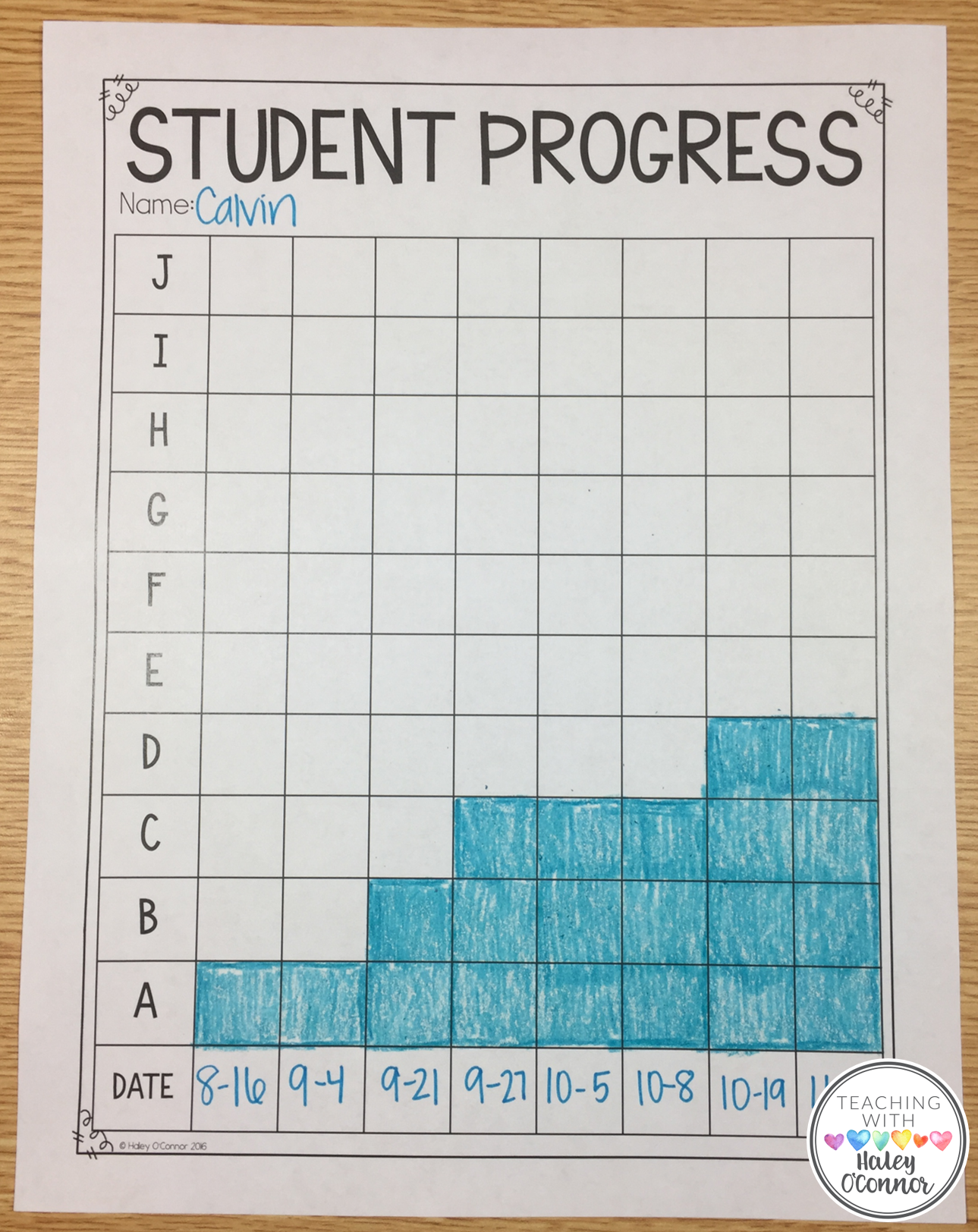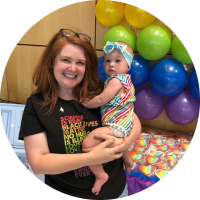Guided Reading Essentials
Hi friends! I just wanted to stop by tonight and share some of my favorite resources for Guided Reading! I’ve said before, and I’ll say it again! I think Guided Reading is one of the most important parts of our day and also one of the most overwhelming! I wanted to provide some simple tools and tips for you to implement it most effectively! 🙂

I’ve broken this post down into a few sections that I think are most important! 🙂 Of course there are lots of other things that are important but I feel like when we have these down, the rest kind of falls into place!
- Quality Texts
- Teacher Support
- Materials for Word Work
- Take Home Bags (or classroom book boxes)
- Note Taking and Planning Forms

The first thing that we need for guided reading is quality texts! Our kiddos are better readers and more willing to take risks when they are engaged with the text! I think this one is the hardest because it’s the most expensive! I am so lucky in that I’ve been at schools with fabulous guided reading libraries! BUT…there are lots of ways to build your library and even some great online resources!
My absolute FAVORITE series for guided reading is Rigby PM Readers. Even with emergent readers, the books have strong story lines that are great for comprehension! They also include dialogue super early and require readers to infer and make meaning while they read! They are pricey, but SO worth it!
Scholastic has some great options as well! I think you have to buy them in bulk (for the most part) but you could also use their leveling guide to purchase individual titles!
Those are just 2 options but there are SO many wonderful series and titles! The only thing that makes a book a “guided reading” book is having multiple copies and knowing the level! 🙂 I’ve found it’s harder for find texts at levels A-E and much easier once you get to level F! You can even find some great deals on Amazon…especially if you’re just getting started!
Reading A-Z, Scholastic and Raz-Kids have printable readers too! I’ve found that my kiddos prefer a real book (with color) but it’s a great solution if those aren’t available!!
Finally, you can find some fabulous books on Teachers Pay Teachers! When my sweet brother just started reading, I created this emergent readers for him at a level A and level B independently! They come in color and black/white and comprehension questions for before AND after! 🙂
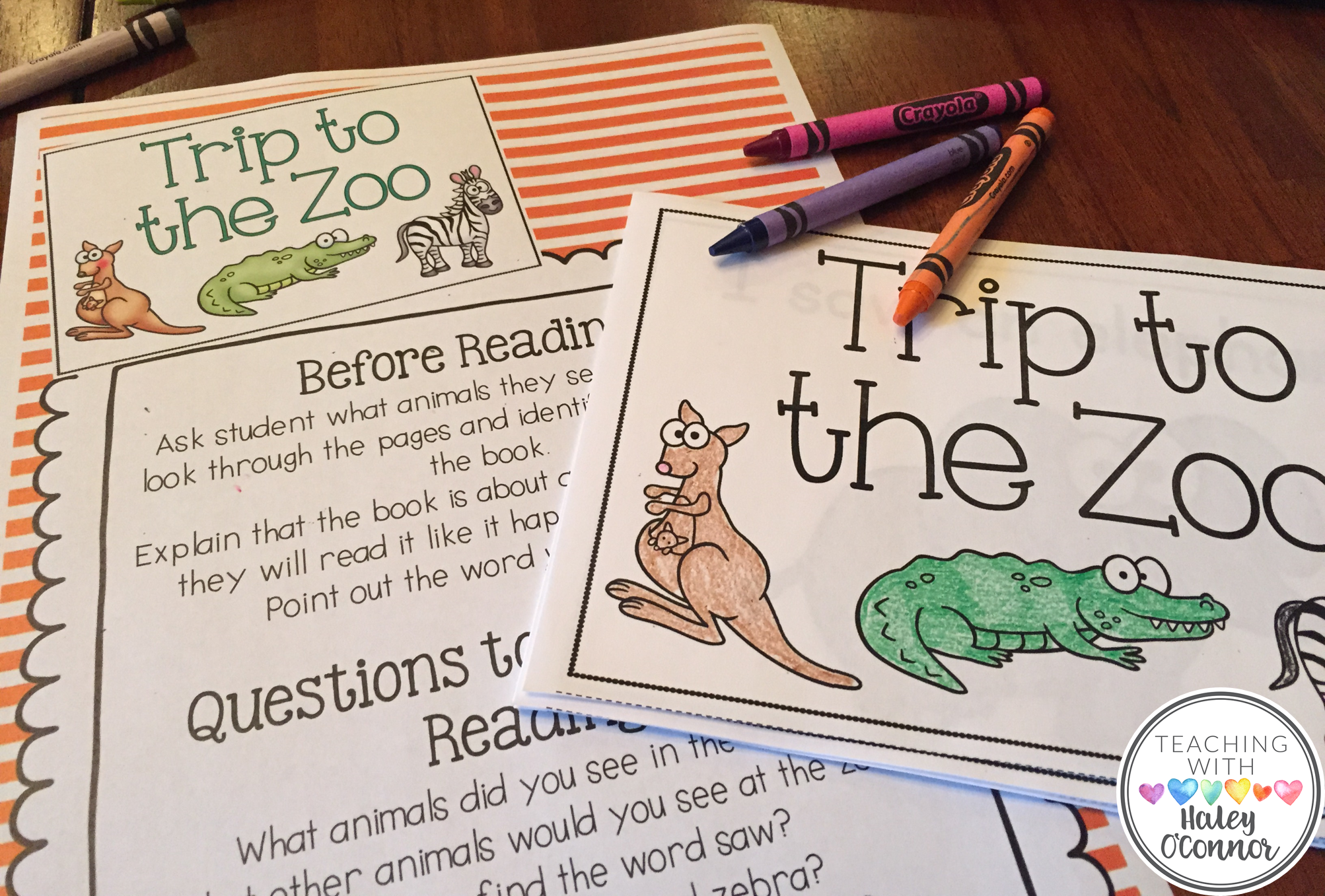
The second thing we need for quality guided reading lessons is solid teacher support, resources, etc! Guided reading is HARD and there’s no way every teacher can know everything about every level and every reader! Having ready made resources at your fingertips makes it a LOT easier to provide the best instruction to our students!

I’ve shared these before, but I just truly believe in them! My absolute favorite resources are The Next Step in Guided Reading, Prompting Guide, and Continuum of Literacy Learning. I am truly a better teacher because of these books!!
I just finished my Guided Reading Survival Kit which is FULL of teacher resources! Here are some things you could keep at your teacher table or in a binder for quick access!
For levels A-K, I made a level guide with quick tips for teachers about readers at each level and how to support them!
You’ll also find comprehension questions and stems to use after fiction AND nonfiction books!
Word Work is such an important part of guided reading! It can happen before or after, or BOTH! But it absolutely HAS to happen…especially with new readers! Word work is how we teach sight words, phonics patterns, decoding, and so much more!

Letter Tiles-Students use these to build sight words and pattern words. They’re also a great visual for changing vowel sounds, initial sounds, etc. And they’re just more engaging than pencil and paper! 🙂
I use highlighting tape to identify one or two tricky words in the text. During the preview, I point the words out and they use the tape to cover the word! It also works great for ELLs with important or new vocabulary!
White boards and markers are ideal for writing responses to book, sight words, sentences and so much more! I actually use my table alot, but for some teachers that’s a little too much chaos and mess haha! 🙂
I write words that my kiddos struggled with in the book on note cards and have them add them to their book baggies or book boxes! They’re also great for flash cards!
Finally, we are constantly cutting apart sentences (especially with levels A-B) to practice the pattern of the text! For higher readers, you can cut words into syllables, have them change the vowel sound, and so much more!
I also like to keep my kiddos engaged with sight words at the back table with games! These are some games from some of my teacher BFFs! You can click either picture to head over to the resource!
This super fun game is called BANG! They read the word cards and when someone gets a BANG card they put them back! It’s super fun, quick, and also teaches our kiddos how to lose appropriately! 🙂 It’s from my sweet, amazing, brilliant friend Brooke Reagan!
I’m also completely and totally in love with these sight word spinners from Miss Decarbo. And how stinking fun is that wand?! She has an amazing blog-post about making the most of your small group time!
Sometimes word work is adorable, and sometimes it looks like this! Haha! But the important thing is that it’s happening! For some of our kiddos, the phonics/spelling/writing programs we use as a whole class are way above or below their reading level. Guided reading is the perfect time to differentiate for them based on their reading level to make sure we’re being most effective! 🙂
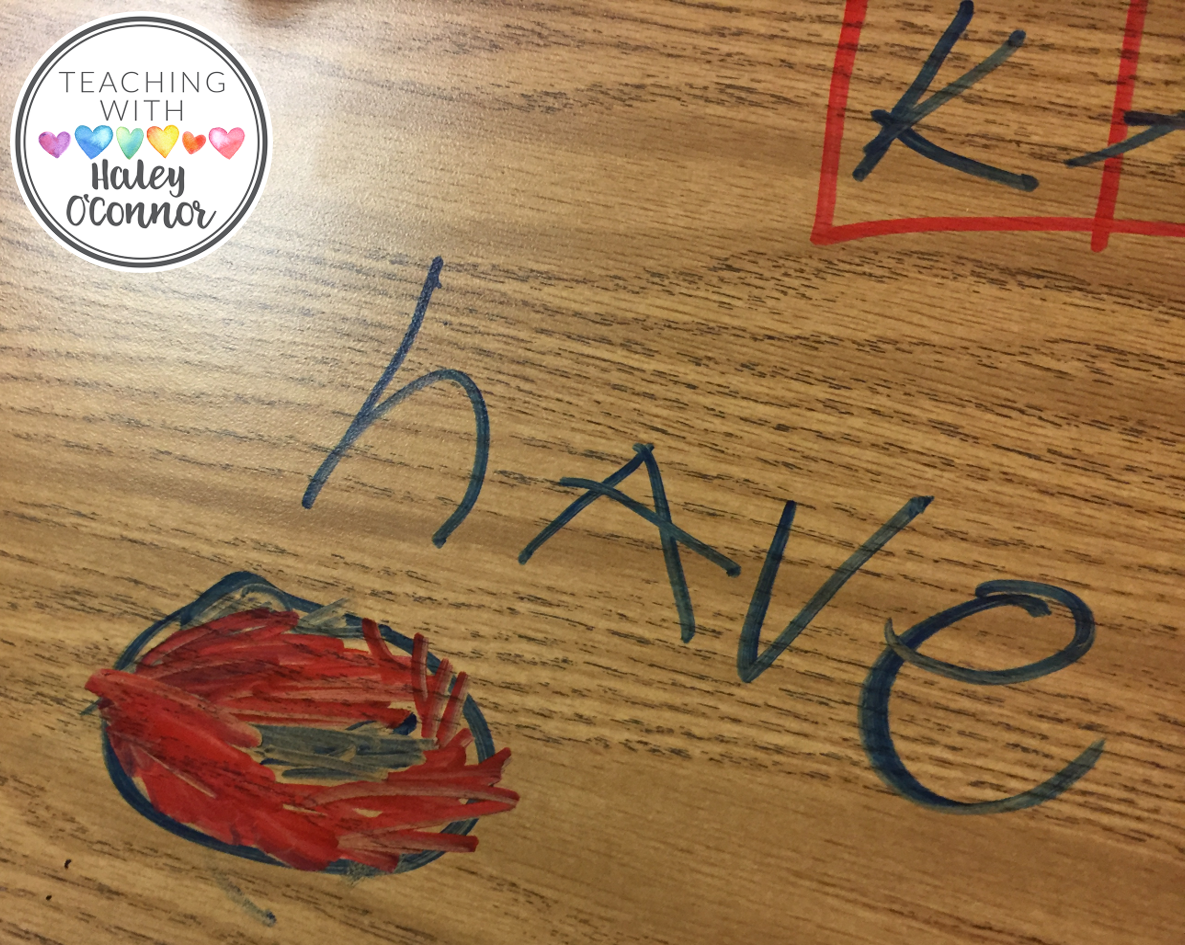
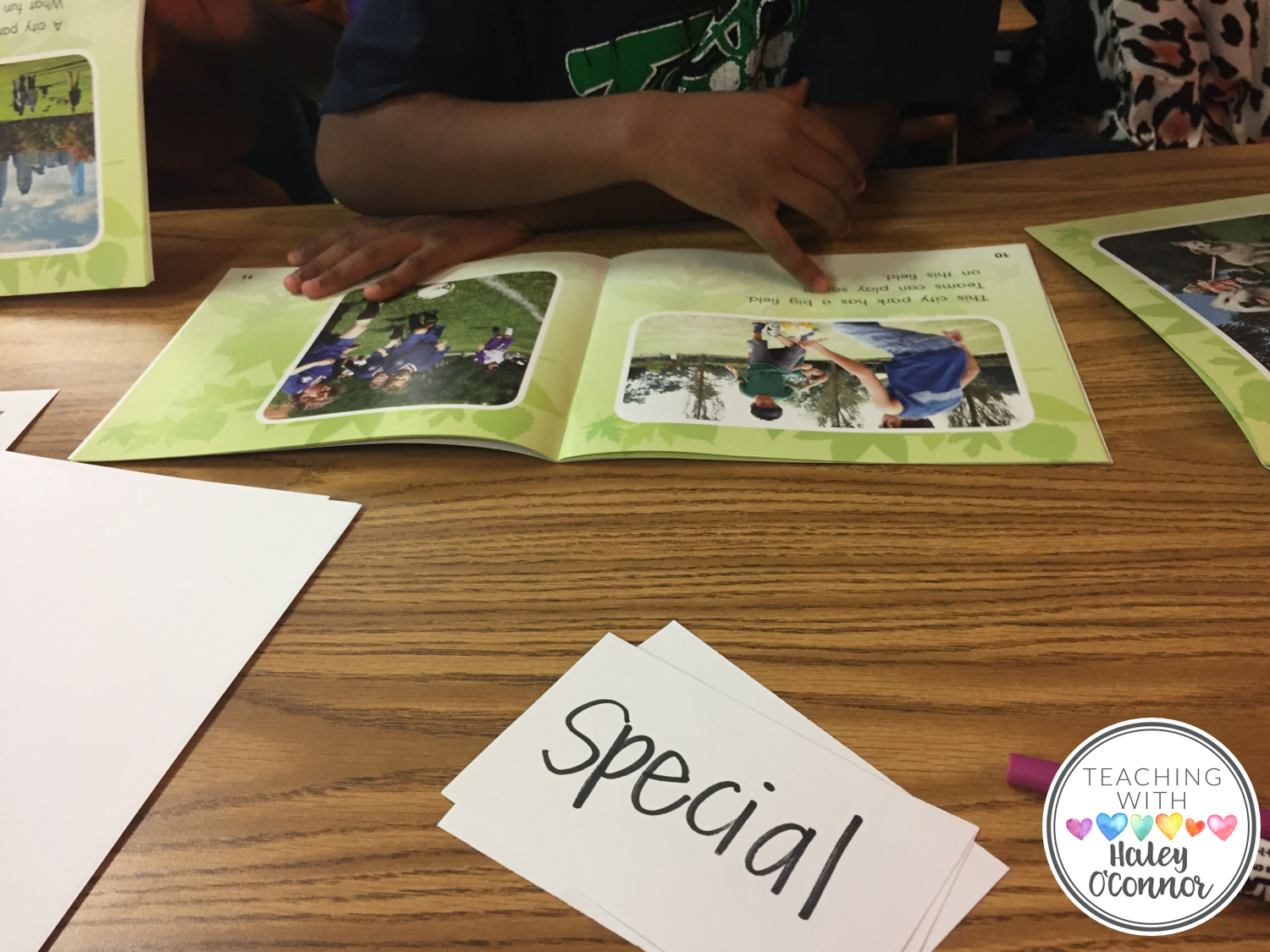
We also need a good system for sending books home!

Ideally, our kiddos are taking their guided reading books home everyday. Research tells us that they need repeated readings to build fluency and comprehension. BUT research also tells us that they need to be exposed to a LOT of texts, especially as they are growing as readers. I try to give my groups a new book each day OR stretch it over two days. But never more than that (unless it’s a chapter book with my higher readers). Sending books home, or keeping them in class book boxes, ensures that they have the opportunity to re-read without spending precious guided reading time on the same book for days and days! In my classroom, I just send books home in a gallon size ziploc baggie. Typically, I only have to replace them once throughout the year! I also have seen lots of teachers use manila envelopes! I absolutely adore these baggies from Really Good Stuff, but they are pricey so a lot of teachers opt for disposable baggies. 🙂 Inside the bag, students should take home their books and any word work materials that they can practice with at home (sight words from the day, magnetic letters from the day, sentence strips to put together).
I have worked in several schools at various SES levels and I can say, wholeheartedly, that parents WANT to help. Some of them are so busy they simply can’t, and some just don’t know how! I try to make sure I’m sending home lots of resources for them to know exactly how to support their reader at home. I’ve found that when I give them the info, they use it! Of course, there are exceptions to every rule but at least we can rest knowing that we GAVE them the information. 🙂
I also have forms to send home when a kiddo reaches a new reading level! That way their parent knows they’ve moved up and how to support them at each level!
Finally, it’s super important that we have an organized way of planning guided reading, taking notes, and tracking our student progress.

For me, planning guided reading takes a few minutes. I choose the best book for my group and scan over my notes from the last time we were together to refresh my brain on what each reader needs support with! I also jot down important words, things to cover in the preview, and possible comprehension questions. Every teacher plans differently, and it’s so important to find a system that works for you! Here are some various formats you could use! 🙂 Some are more detailed than others…depending on your preference!
Above…I didn’t plan for “During Reading.” I didn’t know these readers, and didn’t know what they would need support with! Teaching points are based on what readers struggle with, so you have to really know your reader! 🙂 I also frequently change my teaching point based on what they are struggling with that day!
It’s important to know what strategies your readers are using and need support with! You can find this by analyzing running records. I like to keep a form at my fingertips so I have it easily available during teaching!
Additionally, for the most effective lessons, it’s important that we’re tracking our readers! We need to know if they’re growing, the strategies they’re using and so much more! I take detailed anecdotal notes to help me with planning! It’s impossible to remember everything about every reader so having detailed notes help plan! 🙂
For struggling readers, I track their running records. It helps in RTI meetings to have this data and in parent conferences!
I also graph reading levels WITH them…it’s great for them to reflect on their learning, celebrate their successes, and share with their families!
You can find all of these forms in my Guided Reading Survival Kit! 🙂 Happy Teaching!
